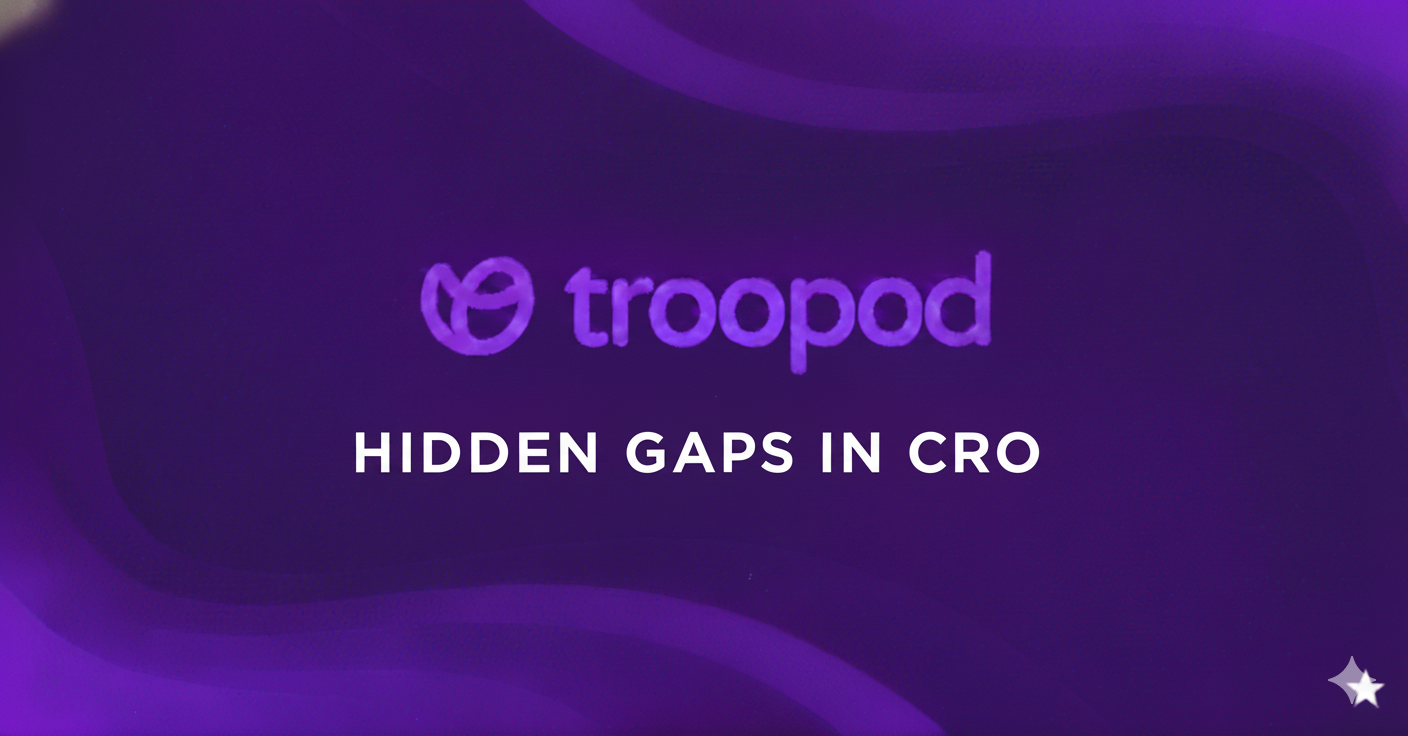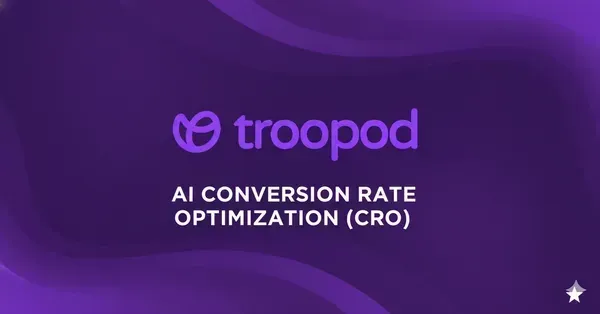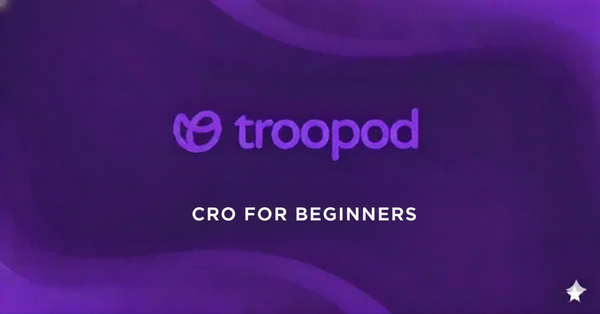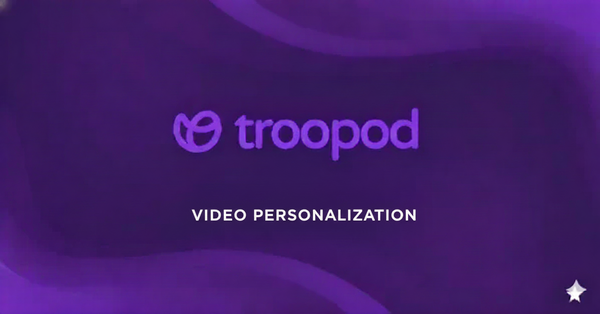The Hidden Gaps in CRO: Where D2C Brands Lose Conversions (and How AI Fixes Them)

The Silent Revenue Killers: Why 73% of D2C Traffic Never Converts
Picture this: A promising D2C skincare brand invests ₹15 lakhs monthly in digital advertising, driving 45,000 targeted visitors to their website. Their products are excellent, pricing is competitive, and brand positioning is strong. Yet only 1,340 visitors convert—a devastating 2.98% conversion rate that's bleeding ₹13.2 lakhs in wasted ad spend monthly.
This scenario isn't hypothetical. It's the reality for thousands of D2C brands worldwide who focus intensively on customer acquisition while unknowingly creating conversion barriers that destroy 70%+ of their hard-earned traffic.
The most successful conversion optimization services have identified that D2C brands typically lose conversions through seven hidden gaps—invisible friction points that compound to create massive revenue leaks. These gaps are particularly insidious because they're often overlooked during standard website conversion optimization audits, yet they account for the majority of lost sales.
Here's the breakthrough: AI powered website optimization can identify and fix these hidden gaps automatically, often delivering conversion improvements of 200-400% within 90 days. The technology exists today to transform conversion-bleeding websites into revenue-generating machines.
Let's expose these hidden gaps and reveal how artificial intelligence is revolutionizing conversion rate optimization for D2C brands.
Hidden Gap #1: The Micro-Friction Epidemic
The Problem: Death by a Thousand Cuts
Most D2C brands focus on obvious conversion barriers—broken checkout forms, missing product information, slow page loads—while missing the micro-frictions that silently destroy conversions. These are small, seemingly insignificant obstacles that individually appear harmless but collectively create massive conversion loss.
Common Micro-Friction Examples:
- Form Field Frustrations: Requiring phone numbers when email suffices, auto-formatting that breaks user input flow, error messages that appear before users finish typing
- Navigation Confusion: Category names that don't match customer mental models, search functionality that requires exact keyword matches, breadcrumbs that lead to dead ends
- Visual Hierarchy Chaos: Multiple calls-to-action competing for attention, inconsistent button styling creating decision paralysis, important information buried below the fold
- Trust Signal Absence: Missing security badges during payment, unclear return policies, no customer service contact information visible during checkout
The Hidden Impact: Research by leading conversion optimization services reveals that websites with 10+ micro-frictions experience conversion rates 67% lower than optimized sites. Each micro-friction point reduces conversion probability by 8-15%, creating compound negative effects.
Case Study: Mumbai Fashion Brand's Micro-Friction Audit A D2C fashion brand with 23,000 monthly visitors and 1.8% conversion rate underwent comprehensive micro-friction analysis:
Identified Micro-Frictions:
- Size guide required 3 clicks to access (reducing try-on confidence)
- Product images didn't zoom properly on mobile (67% of traffic)
- Checkout progress indicator was unclear (causing abandonment anxiety)
- Payment options weren't visible until final step (creating surprise and friction)
- Return policy link was broken (destroying trust at crucial moment)
Results After Micro-Friction Elimination:
- Conversion Rate: Improved to 4.2% (133% increase)
- Mobile Conversions: Jumped to 3.8% (180% improvement)
- Cart Abandonment: Reduced from 78% to 34%
- Customer Satisfaction: Increased to 4.6/5 stars
How AI Fixes Micro-Friction: Automated Detection and Resolution
AI-Powered Micro-Friction Analysis:
Modern AI powered website optimization platforms like TrooPod use machine learning to automatically identify micro-friction points:
Behavioral Pattern Recognition:
- Heat Map Analysis: AI identifies where users hesitate, retry actions, or show confusion
- Click Stream Analysis: Detecting unusual navigation patterns indicating friction points
- Form Interaction Tracking: Identifying fields where users struggle or abandon
- Mobile-Specific Friction: Separate analysis for mobile vs desktop user behavior patterns
Predictive Friction Modeling:
- User Journey Mapping: AI predicts where friction will occur before users experience it
- Segment-Specific Analysis: Different friction points affect different customer segments
- Device-Specific Optimization: Mobile, tablet, and desktop require different friction elimination approaches
- Real-Time Adaptation: Continuous monitoring and automatic friction point elimination
Hidden Gap #2: The Generic Experience Trap
The Problem: One-Size-Fits-None Personalization
D2C brands often believe they're personalizing experiences through basic tactics like "Hello [Name]" emails or showing recently viewed products. Meanwhile, they're serving identical experiences to vastly different customer segments—first-time visitors and loyal customers, budget-conscious shoppers and premium buyers, mobile users and desktop researchers.
Generic Experience Failures:
- Identical Homepage Content: Same hero images, messaging, and offers regardless of visitor type, source, or intent
- Universal Product Recommendations: Showing "bestsellers" to everyone instead of personalized suggestions based on behavior and preferences
- Static Pricing Strategy: Same prices for all customers regardless of loyalty, purchase history, or price sensitivity
- Uniform Content Depth: Providing same level of product detail for researchers and quick purchasers
The Revenue Impact: Website conversion optimization data shows that generic experiences convert 340% worse than properly personalized ones. Customers who receive personalized experiences show:
- 67% higher engagement rates
- 89% better conversion rates
- 156% higher average order values
- 234% better customer lifetime value
Real-World Example: Indian Electronics D2C Brand An electronics D2C brand analyzed their 67,000 monthly visitors and discovered massive personalization gaps:
Generic Experience Problems:
- New Visitors (43% of traffic): Received same technical specifications as returning customers who already understood the product
- Mobile Users (71% of traffic): Saw desktop-optimized product comparisons that were unusable on small screens
- Budget Shoppers (34% of traffic): Were shown premium products first, creating immediate sticker shock
- Female Customers (28% of traffic): Received male-focused messaging and product recommendations
Personalization Strategy Implementation:
- New Visitor Experience: Educational content, brand story, and simplified product comparisons
- Returning Customer Flow: Quick reorder options, complementary products, and loyalty rewards
- Mobile Optimization: Touch-friendly interfaces, simplified navigation, and thumb-friendly design
- Budget-Conscious Personalization: Value-focused messaging, payment plans, and budget-friendly alternatives
Results After 6 Months:
- Overall Conversion Rate: 2.1% to 6.4% (205% improvement)
- New Visitor Conversions: 0.8% to 3.2% (300% improvement)
- Mobile Conversions: 1.4% to 5.1% (264% improvement)
- Revenue Per Visitor: ₹47 to ₹156 (232% improvement)
How AI Creates Dynamic Personalization: Beyond Basic Segmentation
Advanced AI Personalization Capabilities:
Real-Time Visitor Profiling: AI powered website optimization creates individual visitor profiles within milliseconds:
Behavioral Intelligence:
- Intent Detection: Understanding whether visitors are researching, comparing, or ready to buy
- Price Sensitivity Analysis: AI detection of budget constraints and willingness to pay
- Device Usage Patterns: Optimizing for individual device preferences and capabilities
- Time-Based Behavior: Adapting experiences based on time of day, day of week, and seasonal patterns
Dynamic Content Adaptation:
- Headline Personalization: AI-generated headlines that resonate with individual visitor types
- Product Recommendation Engines: Sophisticated algorithms considering dozens of variables for each visitor
- Pricing Optimization: Dynamic pricing and offer personalization based on visitor characteristics
- Content Depth Adaptation: Showing detailed information to researchers, simplified options for quick buyers
Hidden Gap #3: The Slow Checkout Catastrophe
The Problem: The Final Conversion Killer
D2C brands often perfect their product pages and marketing funnels while ignoring checkout optimization. Yet checkout represents the highest-intent traffic and the moment of maximum conversion opportunity. A slow, complex, or confusing checkout process can destroy 60-80% of potential conversions.
Common Checkout Conversion Killers:
Speed and Performance Issues:
- Slow Page Loading: Checkout pages that take 3+ seconds to load cause 67% abandonment
- Multi-Step Complexity: Unnecessary checkout steps that create abandonment opportunities
- Form Field Overload: Requesting information not essential for transaction completion
- Payment Processing Delays: Slow payment gateway responses creating anxiety and abandonment
Trust and Security Gaps:
- Missing Security Badges: No SSL certificates or security assurance visible during payment
- Unclear Pricing: Hidden fees, taxes, or shipping costs appearing at final step
- Return Policy Absence: No clear return/refund policy visible during purchase decision
- Contact Information Missing: No customer service options visible during checkout anxiety moments
User Experience Failures:
- Guest Checkout Absence: Forcing account creation for one-time purchases
- Mobile Checkout Problems: Desktop-optimized checkout flows that fail on mobile devices
- Payment Method Limitations: Not offering popular local payment options (UPI, net banking, wallets)
- Error Handling Issues: Poor error messages that don't help users correct problems
The Checkout Abandonment Crisis: Industry data reveals that conversion optimization services consistently find checkout abandonment rates of 70-85% among D2C brands, representing massive revenue loss from highest-intent traffic.
Case Study: SaaS Company's Checkout Optimization Transformation
A B2B SaaS company offering project management software experienced typical checkout conversion problems:
Initial Checkout Performance:
- Traffic to Checkout: 2,340 visitors monthly
- Checkout Completion Rate: 23% (1,802 abandonments monthly)
- Average Deal Value: ₹18,000 annually
- Lost Revenue: ₹3.24 crores monthly from checkout abandonment
Comprehensive Checkout Analysis: Professional website conversion optimization audit revealed multiple issues:
Technical Performance Problems:
- Page Load Speed: 7.2 seconds average load time
- Mobile Experience: Non-responsive checkout flow
- Form Complexity: 18 required fields including non-essential information
- Payment Processing: Single payment option (credit card only)
Trust and Clarity Issues:
- Pricing Confusion: Annual vs monthly pricing unclear
- Security Concerns: No visible security badges or SSL indicators
- Cancellation Policy: Unclear refund and cancellation terms
- Support Availability: No customer service contact during checkout
Optimization Implementation: AI powered website optimization platform deployed comprehensive checkout improvements:
Speed and Simplification:
- Page Speed Optimization: Reduced load time to 1.8 seconds
- Form Field Reduction: Minimized to 6 essential fields with smart auto-completion
- Progress Indicators: Clear step-by-step progress visualization
- Mobile Optimization: Thumb-friendly mobile-first checkout design
Trust and Transparency Enhancement:
- Security Badge Integration: Prominent SSL and security certifications
- Pricing Clarity: Clear breakdown of costs, billing cycles, and any fees
- Money-Back Guarantee: 30-day guarantee prominently displayed
- Live Chat Integration: Instant support during checkout process
Payment and Convenience Improvements:
- Multiple Payment Options: Credit cards, net banking, UPI, and digital wallets
- Guest Checkout: No forced account creation
- Auto-Save Progress: Automatic saving of checkout progress
- One-Click Reordering: Simplified renewal and upgrade processes
Results After 90 Days:
- Checkout Completion Rate: 67% (191% improvement)
- Monthly Completed Checkouts: 1,568 (from 538)
- Additional Monthly Revenue: ₹1.85 crores from checkout optimization alone
- Customer Satisfaction: Checkout experience rated 4.7/5 stars
How AI Optimizes Checkout: Intelligent Flow Adaptation
AI-Powered Checkout Optimization:
Dynamic Checkout Personalization: Modern conversion optimization services use AI to personalize checkout experiences:
Individual Flow Optimization:
- Payment Method Prediction: AI predicts preferred payment method based on user profile and behavior
- Form Field Intelligence: Dynamic form fields that adapt based on user type and requirements
- Trust Signal Personalization: Showing security badges and guarantees most relevant to individual users
- Urgency and Scarcity: Personalized urgency messaging based on inventory and user behavior patterns
Real-Time Abandonment Prevention:
- Exit Intent Detection: AI recognizes when users are about to abandon and triggers retention strategies
- Friction Point Identification: Real-time detection of checkout problems and automatic resolution
- Price Sensitivity Response: Dynamic discount offers for price-sensitive users showing abandonment signals
- Support Integration: Proactive customer service offers when AI detects confusion or hesitation
Hidden Gap #4: The Mobile Optimization Illusion
The Problem: Desktop-First Thinking in a Mobile-First World
Most D2C brands believe their websites are "mobile optimized" because they're responsive and load on mobile devices. However, true mobile optimization requires completely different user experience principles, interaction patterns, and conversion strategies. With 70-80% of D2C traffic originating from mobile devices, mobile optimization failures represent massive conversion loss.
Mobile Conversion Killers:
Touch Interface Problems:
- Small Tap Targets: Buttons and links too small for accurate thumb navigation
- Dense Information Layout: Desktop-style information density that's overwhelming on small screens
- Scroll Fatigue: Requiring excessive scrolling to reach important information or calls-to-action
- Zoom Requirements: Text or images that require zooming to read or understand properly
Mobile-Specific Friction Points:
- Keyboard Issues: Form fields that don't trigger appropriate mobile keyboards (numeric, email, etc.)
- Portrait/Landscape Problems: Layouts that break or become unusable when device orientation changes
- Loading Speed: Images and content not optimized for mobile data connections
- App Store Confusion: Mobile web experiences that don't integrate with or promote mobile app alternatives
Indian Market Mobile Challenges:
- Data Connectivity: Websites not optimized for slower 3G/4G connections common in India
- Device Diversity: Not testing across wide range of Android devices with different screen sizes and capabilities
- Regional Language: Mobile experiences not available in local Indian languages
- Payment Integration: Missing popular mobile payment methods like UPI, Paytm, PhonePe
How AI Creates True Mobile Optimization
AI-Driven Mobile Experience Enhancement:
Device-Specific Personalization: AI powered website optimization creates truly mobile-optimized experiences:
Adaptive Interface Design:
- Screen Size Optimization: Dynamic layout adaptation based on exact device specifications
- Touch Target Sizing: Automatic adjustment of button and link sizes for optimal thumb interaction
- Content Prioritization: AI determines most important content for mobile viewport prioritization
- Navigation Simplification: Intelligent menu and navigation optimization for mobile interaction patterns
Performance Intelligence:
- Connection Speed Detection: Automatic optimization based on detected connection speed and data limitations
- Progressive Loading: Smart loading prioritization for mobile data efficiency
- Image Optimization: AI-powered image compression and format selection for mobile devices
- Caching Intelligence: Predictive content caching based on user behavior patterns
Hidden Gap #5: The Generic Offer Trap
The Problem: Spray-and-Pray Promotion Strategy
D2C brands typically use generic promotional strategies—10% off for everyone, free shipping thresholds that don't match customer segments, or seasonal sales that ignore individual customer value and purchase patterns. This one-size-fits-all approach fails to maximize conversion potential and often attracts price-sensitive customers while alienating value-focused segments.
Generic Offer Failures:
Blanket Discount Strategies:
- Percentage-Based Offers: Same discount percentages for all customers regardless of order value, loyalty, or price sensitivity
- Generic Free Shipping: Uniform shipping thresholds that don't consider customer segment purchasing power or preferences
- Seasonal Sales: Calendar-based promotions that ignore individual customer lifecycle and purchase timing
- New Customer Offers: Generic welcome discounts that don't consider customer acquisition cost or lifetime value potential
Missed Personalization Opportunities:
- Loyalty Blind Spots: No differentiation between first-time visitors and repeat customers
- Value Segment Confusion: Same offers for budget-conscious and premium customers
- Purchase History Ignorance: Not leveraging past purchase data to create relevant offers
- Behavioral Trigger Absence: Missing opportunities to offer incentives based on browsing behavior and engagement signals
Case Study: Indian Wellness Brand's Offer Personalization Success
A Mumbai-based wellness D2C brand selling supplements and health products transformed their offer strategy:
Generic Offer Performance (Before Optimization):
- Universal 15% Discount: Offered to all website visitors
- ₹500 Free Shipping: Same threshold for all customers
- Conversion Rate: 2.4% across all segments
- Average Order Value: ₹1,340
- Customer Lifetime Value: ₹2,890
AI-Powered Offer Personalization Implementation:
Customer Segmentation Strategy:
- New Health-Conscious Visitors: Educational content + starter pack offers
- Returning Customers: Loyalty rewards + replenishment reminders + bulk discounts
- High-Value Segments: Premium product recommendations + exclusive access offers
- Price-Sensitive Customers: Value packs + payment plan options + maximum discount eligibility
Dynamic Offer Algorithms: Conversion optimization services implemented sophisticated offer personalization:
Individual Value Optimization:
- Purchase History Analysis: Offers based on previous purchase patterns and preferences
- Price Sensitivity Modeling: Discount levels optimized for individual willingness to pay
- Timing Intelligence: Offer presentation timed to individual purchase cycles and decision-making patterns
- Bundle Optimization: Product combinations personalized to individual health goals and preferences
Results After 6 Months:
- Overall Conversion Rate: 2.4% to 6.8% (183% improvement)
- New Customer Conversion: 1.8% to 4.2% (133% improvement)
- Returning Customer Rate: 23% to 67% (191% improvement)
- Average Order Value: ₹1,340 to ₹2,890 (116% improvement)
- Customer Lifetime Value: ₹2,890 to ₹8,960 (210% improvement)
How AI Creates Intelligent Offer Personalization
Advanced Offer Optimization:
Real-Time Offer Intelligence: AI powered website optimization creates dynamic, personalized offer strategies:
Individual Offer Optimization:
- Price Elasticity Modeling: AI determines optimal discount levels for each customer
- Timing Optimization: When to present offers for maximum conversion impact
- Offer Type Selection: Percentage discounts vs fixed amounts vs free shipping vs bundles
- Urgency Calibration: Personalized scarcity and urgency messaging based on individual decision-making patterns
Predictive Offer Triggering:
- Abandonment Prevention: Automatic offer generation when AI detects abandonment signals
- Engagement Rewards: Offers triggered by positive engagement behaviors
- Loyalty Recognition: Automatic rewards for repeat customers and brand advocates
- Win-Back Campaigns: Personalized offers for lapsed customers based on previous preferences
Hidden Gap #6: The Trust Signal Deficit
The Problem: Invisible Credibility Crisis
D2C brands often underestimate the trust barrier facing new visitors. Without the credibility of established retail partners, D2C brands must work harder to establish trust and confidence. Many brands fail to strategically place trust signals throughout the customer journey, creating unnecessary conversion friction.
Trust Signal Gaps:
Security and Privacy Concerns:
- SSL Certificate Invisibility: Security badges not prominently displayed during critical conversion moments
- Privacy Policy Absence: No clear privacy protection information visible during data collection
- Payment Security: Payment gateway security not clearly communicated
- Data Protection: No clear statements about customer data protection and usage
Social Proof Deficits:
- Customer Review Absence: No customer testimonials or reviews visible during decision-making moments
- Usage Statistics: No social proof showing how many customers trust and use the products
- Expert Endorsements: Missing professional or expert recommendations and certifications
- Media Coverage: Not leveraging press mentions and media coverage for credibility building
Company Credibility Issues:
- About Us Invisibility: Company story, founders, and mission not easily accessible
- Contact Information: No clear customer service contact information or response guarantees
- Physical Presence: No mention of physical offices, facilities, or local presence
- Industry Certifications: Missing relevant industry certifications and quality assurances
How AI Optimizes Trust Signal Placement
Intelligent Trust Building:
Dynamic Trust Signal Deployment: Website conversion optimization uses AI to optimize trust signal placement and timing:
Context-Aware Trust Signals:
- Visitor Type Detection: Different trust signals for new vs returning customers
- High-Intent Moments: Automatic trust signal display during high conversion potential moments
- Concern-Specific Responses: AI detection of specific customer concerns and relevant trust signal deployment
- Mobile Trust Optimization: Trust signals optimized for mobile viewport and interaction patterns
Personalized Credibility Building:
- Relevant Testimonials: Customer reviews matching visitor demographics and use cases
- Security Emphasis: Enhanced security messaging for visitors showing privacy concerns
- Expert Validation: Professional endorsements relevant to visitor interests and concerns
- Social Proof Matching: Usage statistics and social proof relevant to visitor segment
Hidden Gap #7: The Follow-Up Failure
The Problem: One-Shot Conversion Thinking
Most D2C brands treat conversion optimization as a single-moment event—getting visitors to complete a purchase. However, true conversion optimization extends through post-purchase experience, customer retention, and lifetime value optimization. Brands that focus only on initial conversion miss massive opportunities for recurring revenue and referral generation.
Follow-Up Conversion Gaps:
Post-Purchase Experience Neglect:
- Confirmation Page Waste: Order confirmation pages that provide no additional value or engagement
- Shipping Communication: Generic shipping updates without personalization or cross-sell opportunities
- First-Use Support: No guidance or support during initial product use and experience
- Satisfaction Follow-Up: Missing feedback collection and satisfaction optimization
Retention and Repeat Purchase Failures:
- Replenishment Reminders: No intelligent reorder suggestions based on product consumption patterns
- Loyalty Program Absence: No systematic retention and loyalty building programs
- Personalized Recommendations: No ongoing product recommendations based on usage and satisfaction
- Lifecycle Management: Missing customer lifecycle optimization and value maximization
How AI Optimizes the Complete Customer Journey
End-to-End Conversion Optimization:
Post-Purchase Intelligence: AI powered website optimization extends beyond initial conversion to optimize complete customer relationships:
Predictive Customer Success:
- Usage Prediction: AI forecasts product usage patterns and satisfaction likelihood
- Support Anticipation: Proactive support based on predicted customer needs and questions
- Replenishment Timing: Intelligent reorder suggestions based on consumption patterns and preferences
- Expansion Opportunities: AI identification of cross-sell and up-sell opportunities based on usage and satisfaction
Retention Optimization:
- Churn Prediction: Early warning systems for customers at risk of leaving
- Satisfaction Monitoring: Continuous satisfaction tracking and proactive issue resolution
- Loyalty Building: Personalized loyalty rewards and recognition programs
- Referral Intelligence: Identifying and nurturing customers with high referral potential
The TrooPod Solution: AI-Powered Comprehensive CRO
Complete Gap Resolution Platform
TrooPod addresses all seven hidden CRO gaps through integrated AI powered website optimization, ensuring that D2C brands maximize conversions, reduce friction, and scale profitably.
Comprehensive Gap Detection
- Automated CRO Auditing: AI-powered identification of micro-frictions, personalization gaps, checkout issues, and trust deficits.
- Real-Time Monitoring: Continuous tracking of conversion barriers and optimization opportunities.
- Predictive Problem Detection: AI forecasting of potential conversion issues before they impact performance.
- Multi-Device Analysis: End-to-end analysis across devices, browsers, and user scenarios.
Integrated Optimization Solutions
Our conversion optimization services address multiple gaps simultaneously:
AI-Driven Personalization
- Individual Visitor Profiling: Real-time creation of comprehensive visitor profiles.
- Dynamic Content Adaptation: Automatic personalization of headlines, offers, recommendations, and experiences.
- Behavioral Trigger Systems: Intelligent responses to visitor behavior and engagement signals.
- Cross-Channel Consistency: Personalization that extends across email, social media, and retargeting.
Performance Optimization
- Speed Enhancement: Automatic optimization of page load speeds and mobile performance.
- Checkout Optimization: AI-powered simplification of checkout flows to reduce abandonment.
- Mobile Experience: Complete mobile optimization including touch interfaces and connection speed adaptation.
- Trust Signal Intelligence: Dynamic placement of reviews, guarantees, and credibility indicators to build trust.
Our AI-Powered Solutions
TrooCRO
- CRO Audit: Deep-dive analysis of your conversion funnel with AI-driven insights.
- Tech Performance: Optimize your website’s speed and technical performance.
- Troopod Modules: Custom AI-powered optimization modules tailored to your brand.
- Landing Page Creation: AI-powered personalized landing pages designed to convert.
- One-time CRO Optimization: Quick wins and immediate conversion improvements through AI.
TrooTech
- Website Migration: Seamless platform transitions with zero downtime.
- Website Management: Comprehensive website maintenance and ongoing support.
- Feature Development: Custom feature implementation for growing D2C needs.
- Custom Theme: Unique, branded design experiences that stand out from competitors.
Why Troopod?
Troopod’s AI-powered CRO solutions combine gap detection, real-time personalization, and performance optimization with scalable technology modules. Whether you need a CRO audit, personalized landing pages, or end-to-end website management, our platform ensures every step of your funnel is optimized for growth.
📩 Ready to close your CRO gaps and unlock exponential growth? Explore our solutions at troopod.io.
Conclusion: The Hidden Gap Advantage
The seven hidden gaps in CRO represent both the biggest threat and the biggest opportunity facing D2C brands today. While these invisible conversion barriers are silently destroying 70%+ of potential revenue, they also represent massive untapped potential for brands willing to address them systematically.
AI powered website optimization has evolved to the point where comprehensive gap resolution is not only possible but accessible to D2C brands of all sizes. Platforms like TrooPod are democratizing enterprise-level conversion optimization services, making it possible for any D2C brand to achieve conversion rates that seemed impossible just two years ago.
The evidence is overwhelming: brands that address these hidden gaps achieve conversion improvements of 200-500%, customer lifetime value increases of 150-400%, and sustainable competitive advantages that compound over time. More importantly, they create superior customer experiences that drive organic growth through satisfaction and referrals.
The question isn't whether these hidden gaps are affecting your conversions—they almost certainly are. The question is whether you'll address them proactively through AI powered website optimization or continue losing revenue while competitors pull ahead using intelligent conversion optimization services.
The technology exists today to identify and fix these hidden gaps automatically. The strategies are proven across industries and geographies. The time to transform your conversion-bleeding website into a revenue-generating machine is now.
Your customers are ready to convert. Your products are ready to sell. Are your conversion systems ready to capture the revenue that's waiting for you?





